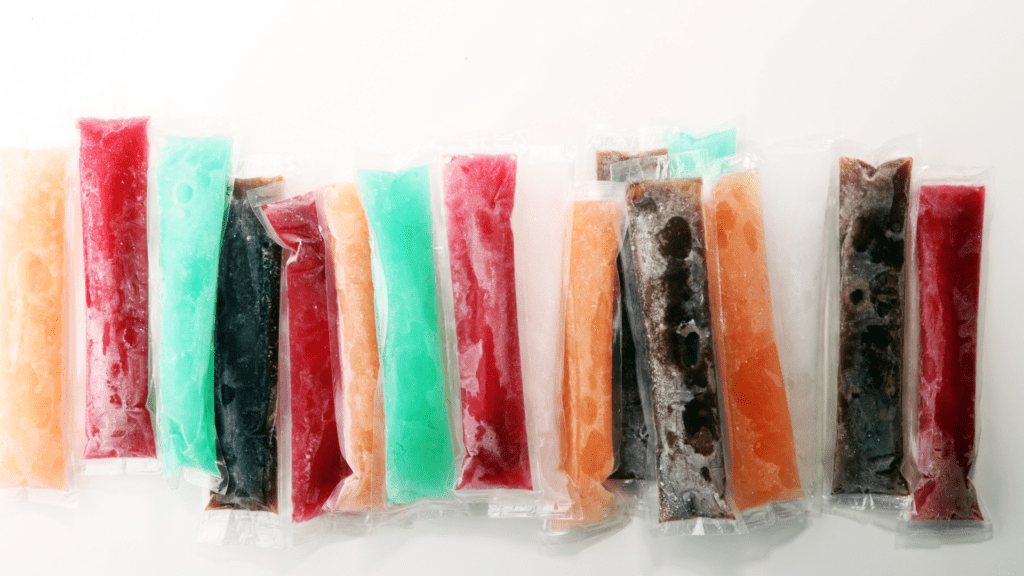How can small businesses use nostalgia in their marketing strategies to improve customer acquisition?
Imagine flipping through an old photo album or hearing a familiar song from your childhood – the rush of emotions and memories is undeniable. In 2024, nostalgia continues to be a powerful tool in marketing, tapping into consumers’ sentimental longing for the past to forge strong emotional connections. Nostalgia marketing leverages these deep-rooted emotions to create a compelling narrative that resonates with consumers on a personal level. This blog will explore how nostalgic advertising taps into consumers’ memories and emotions, the psychological impact of nostalgia, and effective strategies for incorporating it into modern marketing campaigns. Discover how connecting the past with the present can elevate your brand and foster lasting loyalty among your audience.
What is Nostalgia Marketing?
Nostalgia marketing is a strategy that involves evoking memories of the past to create an emotional connection with consumers. By tapping into sentimental longing for earlier times, brands can leverage positive associations and emotions linked to consumers’ personal histories or cultural memories. This form of marketing harnesses the power of nostalgia to make products and services more appealing by fostering feelings of comfort, familiarity, and trust.
The Psychological Appeal of Nostalgia
Nostalgia marketing taps into deep psychological mechanisms that influence consumer behavior. When people experience nostalgia, they often feel a sense of comfort and emotional security. This emotional state can be particularly powerful in marketing because it creates a positive association with the brand.
Psychological Mechanisms Behind Nostalgia
Nostalgia triggers the brain’s reward centers by releasing neurotransmitters like dopamine and serotonin, which enhance mood and foster a sense of well-being. This emotional response is why nostalgic advertisements often evoke feelings of happiness, warmth, and longing for the past.
Studies on the Emotional Effects of Nostalgia
Several studies have examined the effects of nostalgia on emotions and consumer behavior. Research published in the Journal of Consumer Research found that nostalgic feelings can make people more willing to spend money and donate to charitable causes. Another study in the journal Emotion showed that nostalgia can counteract feelings of loneliness and increase social connectedness, which can translate to stronger brand loyalty.
Enhancing Mood and Creating Positive Associations
Nostalgia can enhance mood by bringing back fond memories, which, in turn, can create positive associations with a brand. When consumers encounter nostalgic marketing, they often experience a blend of positive emotions that can improve their perception of the brand. For example, an advertisement featuring a beloved childhood character or a retro product design can make consumers feel happy and valued, leading them to develop a stronger attachment to the brand. This positive emotional state not only increases brand loyalty but also encourages word-of-mouth promotion as consumers share their nostalgic experiences with others.

Benefits of Nostalgia Marketing
Emotional Connection
Nostalgic advertisements create a powerful emotional bond between consumers and brands by evoking fond memories and positive emotions from the past. This emotional connection is significant because it goes beyond the product or service itself, tapping into personal experiences and sentiments that consumers cherish. According to a study in the Journal of Consumer Research, nostalgic triggers can make advertisements more appealing and memorable, leading to stronger consumer engagement. When consumers feel emotionally connected to a brand, they are more likely to develop a preference for it and share their positive experiences with others, enhancing the brand’s reputation and reach.
Brand Loyalty
Nostalgia marketing can lead to increased brand loyalty as it fosters a sense of familiarity and trust. Consumers who associate positive emotions with a brand are more likely to remain loyal and make repeat purchases. This loyalty is built on the emotional satisfaction derived from the nostalgic experience, which reinforces the consumer’s decision to choose the brand repeatedly. For instance, a campaign that brings back a popular product from the past or uses retro packaging can evoke a sense of nostalgia that strengthens consumer loyalty. Research indicates that nostalgic feelings can enhance customer satisfaction and retention, making nostalgia marketing a valuable strategy for building long-term customer relationships.
Differentiation
In a crowded market, nostalgia can help a brand stand out by offering a unique and emotionally resonant experience that competitors may not provide. By leveraging nostalgic elements, brands can differentiate themselves and create a distinctive identity that appeals to consumers’ emotions. Nostalgia marketing can also revive interest in a brand by reconnecting with former customers who have fond memories associated with it. This strategy not only attracts new customers but also re-engages lapsed ones. For example, brands that revive vintage logos, classic products, or iconic advertising campaigns can capture consumer attention and distinguish themselves in a competitive landscape. The uniqueness and emotional depth of nostalgia marketing can give brands a competitive edge, making them more memorable and preferred by consumers.
Strategies for Implementing Nostalgia in Marketing
To create an effective nostalgia marketing campaign, it’s essential to identify elements from the past that resonate deeply with your target audience. These elements can include specific time periods, cultural events, popular music, iconic imagery, or beloved products. Start by researching the demographic details of your audience, including their age, interests, and historical context they identify with. Tools like social media surveys, focus groups, and market research reports can provide insights into the nostalgic triggers that appeal to your audience. For instance, if your target audience grew up in the 1990s, incorporating elements like 90s music, fashion, or technology can evoke strong emotional responses. Additionally, studying past successful campaigns can reveal patterns and elements that have historically resonated with your audience.
Storytelling
Storytelling is a crucial component of nostalgic marketing as it allows brands to create a narrative that engages consumers on an emotional level. Effective nostalgic stories often blend past experiences with the present, creating a bridge that connects consumers’ fond memories with current brand experiences. To craft compelling nostalgic stories, focus on authenticity and relatability. Share genuine stories from your brand’s history, customer testimonials, or fictional narratives that reflect the era you’re targeting. For example, Coca-Cola’s “Share a Coke” campaign personalized bottles with popular names from various decades, allowing consumers to reminisce and share their stories. Remember, a well-told nostalgic story can captivate your audience, evoke emotions, and foster a deeper connection with your brand.
Using Visual and Audio Cues
Visual and audio elements play a significant role in evoking nostalgia and enhancing the emotional impact of your marketing materials. Visual cues such as retro design elements, vintage colors, and classic logos can instantly transport consumers back to a different time. Use images that reflect the era you’re targeting, such as old photographs, vintage advertisements, or iconic products. Audio cues, like familiar jingles, theme songs, or popular tracks from the past, can also trigger nostalgic feelings. Music has a powerful emotional impact and can enhance the overall nostalgic experience. For example, playing a popular song from the 80s in your ad can evoke memories and create a positive association with your brand. When incorporating these elements, ensure they align with your brand message and resonate with your target audience. Use tools like video editing software to blend these visual and audio elements seamlessly into your marketing content.
Potential Challenges and Considerations
Overuse of Nostalgia
While nostalgia can be a powerful tool in marketing, there is a risk of over-relying on it, which can make your brand seem stuck in the past and out of touch with current trends. To balance nostalgia with fresh, innovative content, consider the following tips:
- Blend the Old with the New: Integrate nostalgic elements with modern technology, contemporary design, or current cultural references to keep your content relevant.
- Moderation is Key: Use nostalgic themes sparingly and strategically. Overuse can lead to diminishing returns and a loss of impact.
- Innovative Twists: Offer a new perspective or a modern twist on nostalgic elements to engage both long-time and new customers.
- Audience Diversity: Understanding the generational diversity of your target audience is crucial for creating inclusive nostalgic content. Different age groups have different nostalgic triggers, and a one-size-fits-all approach may not resonate with everyone. Here are some strategies for catering to a diverse audience:
- Segment Your Audience: Use data analytics to segment your audience by age, interests, and other relevant factors. Tailor your nostalgic content to fit each segment.
- Multi-Era Appeal: Incorporate elements from multiple eras to appeal to a broader audience. For example, a campaign could feature 80s music alongside 90s fashion trends.
- Inclusive Storytelling: Ensure that your nostalgic stories are inclusive and relatable to various demographics. Highlight diverse characters and experiences that reflect the breadth of your audience.
By considering these challenges and incorporating strategic solutions, you can leverage the power of nostalgia in your marketing efforts effectively, while ensuring it remains fresh, relevant, and inclusive.
Wrap-Up
Nostalgia marketing can create a powerful emotional connection with consumers, driving brand loyalty and helping businesses stand out in a crowded market. By understanding the psychological appeal of nostalgia, identifying key nostalgic elements, and balancing nostalgia with modern content, brands can effectively leverage this strategy to enhance their marketing efforts.
Consider incorporating nostalgic elements into your marketing strategy to tap into the emotional power of the past and connect with your audience on a deeper level. If you need expert guidance on integrating nostalgia into your campaigns, contact me today for tailored marketing solutions designed to grow your business and enhance customer loyalty.







